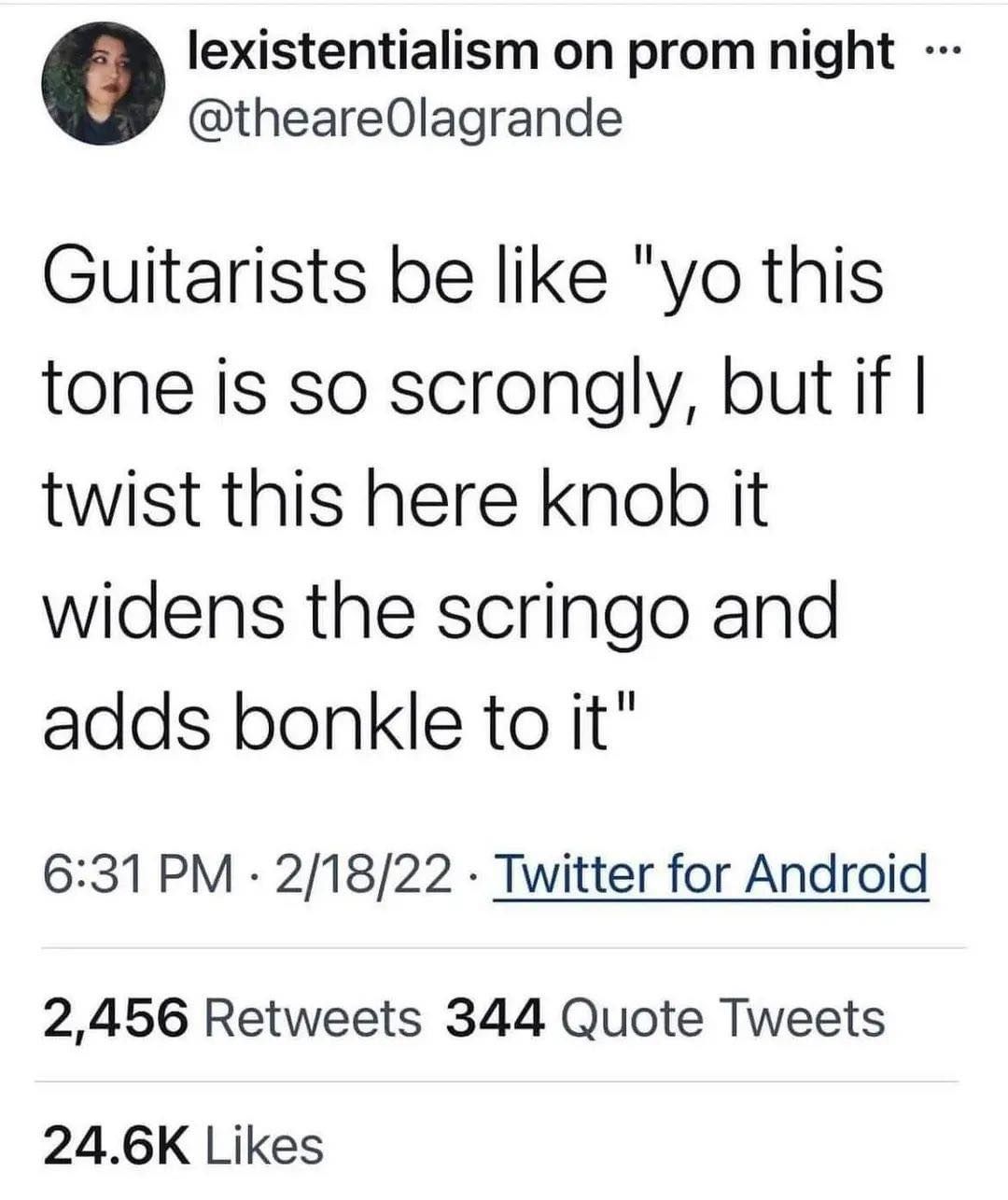this post was submitted on 27 Dec 2023
653 points (100.0% liked)
196
16552 readers
2034 users here now
Be sure to follow the rule before you head out.
Rule: You must post before you leave.
founded 1 year ago
MODERATORS
you are viewing a single comment's thread
view the rest of the comments
view the rest of the comments

It's alchemy really.
Do you have a version of this with a bit less jpeg by any chance
1220x833
This is the best I could find. Looks like op grabbed their copy from reddit. Had to go off the beaten path to find a clearer one.
🥰 ❤️
It still cracks me up that guitar people call filters "wah"
Wah is the movement of a narrow band pass filter in a rather limited range, often done using a somewhat expressive timing.
It's not normally used as a static filter.
You never used a half-cocked wah? That's a static filter
Complete layman already confused, what's the difference between a static and pass filter?
A dynamic filter will keep changing while a static filter stays at one cutoff frequency. Passive vs active filters are a different situation. Passive filters are just straight forward low/high/band pass filters that don't need a power supply. Active filters use transistors or op amps to boost or attenuate certain frequencies and do require a separate power supply.
So the tone knob on a guitar is a passive static filter. It can be adjusted, but usually it stays in one position once you get it in the right spot. The EQ on certain pedals are active static filters. Wah pedals are usually active dynamic filters, they're constantly changing while you play and also use powered circuitry to achieve the filtering effect.
An old technique is to set the wah pedal as "half cocked", where you set it to a specific spot that you like and then leave it there.
Where's the "running a maxed out HM-2 pedal into a Peavey solid state amp"?